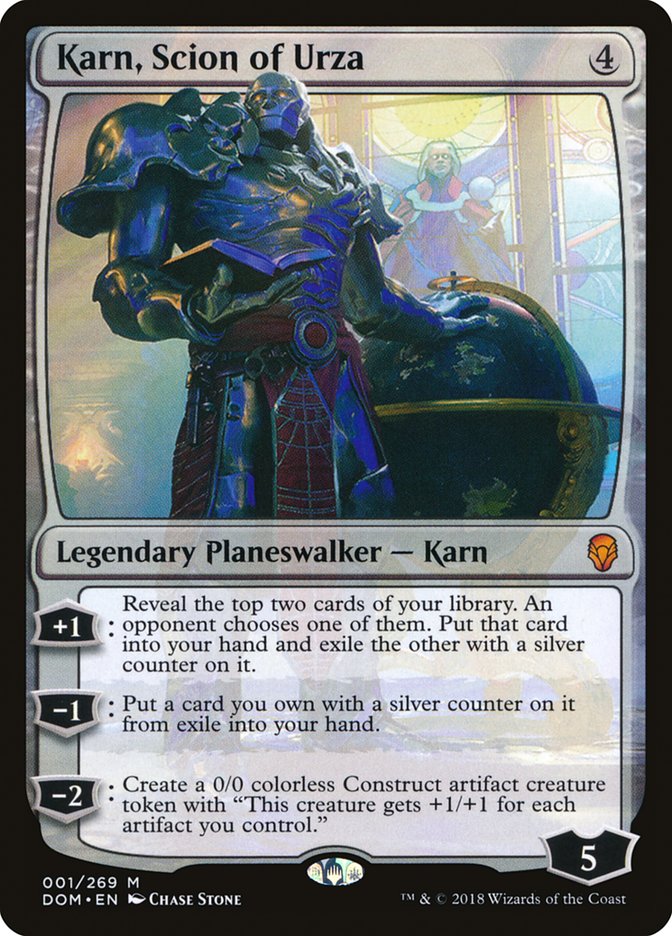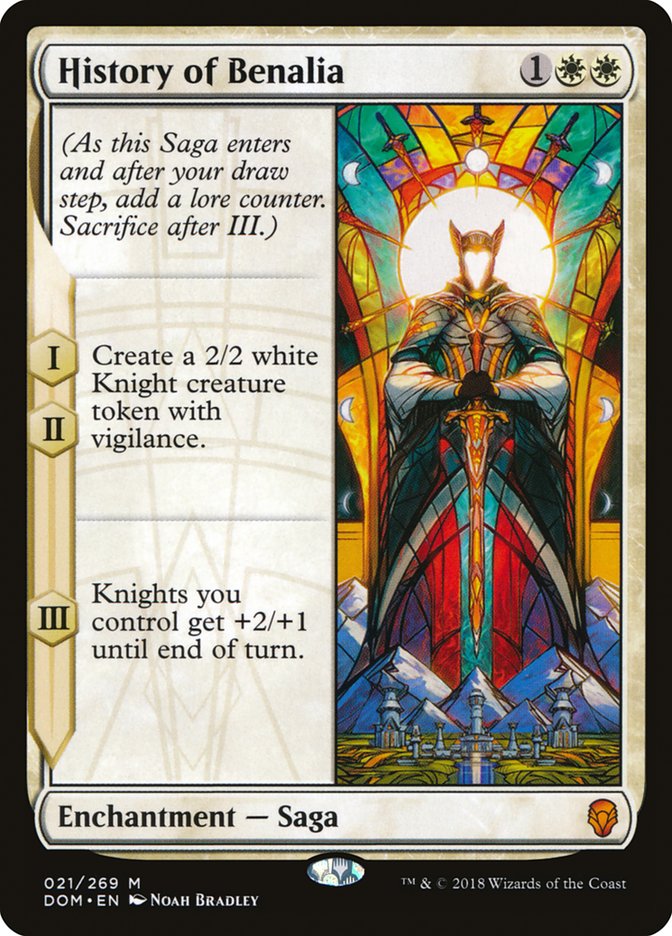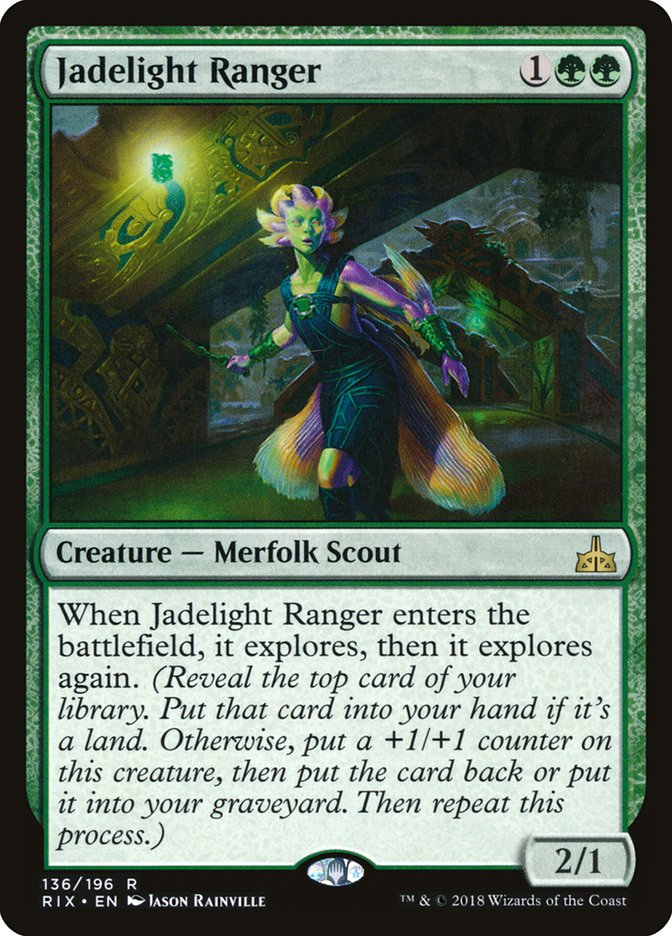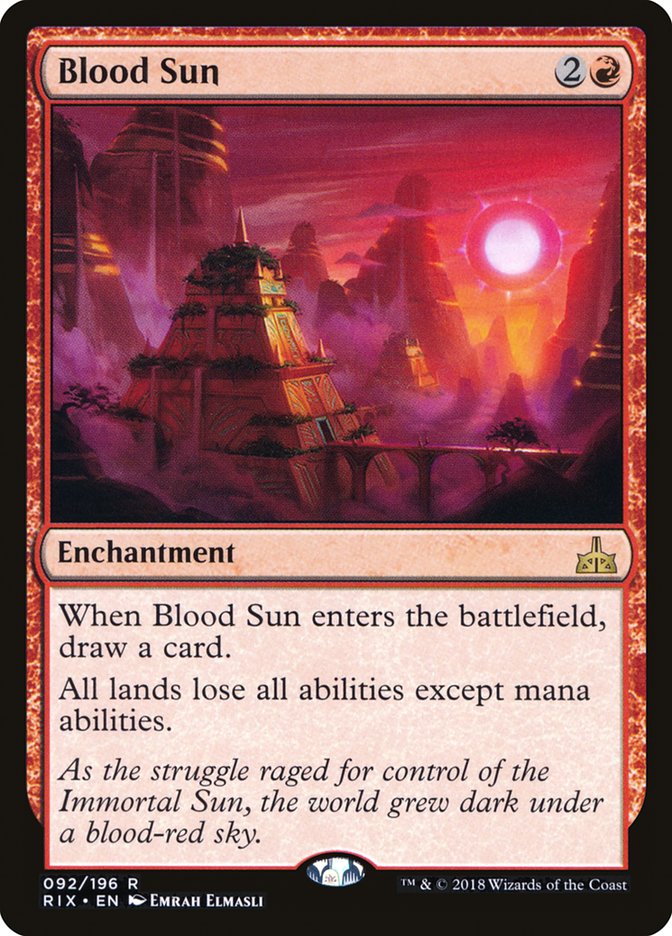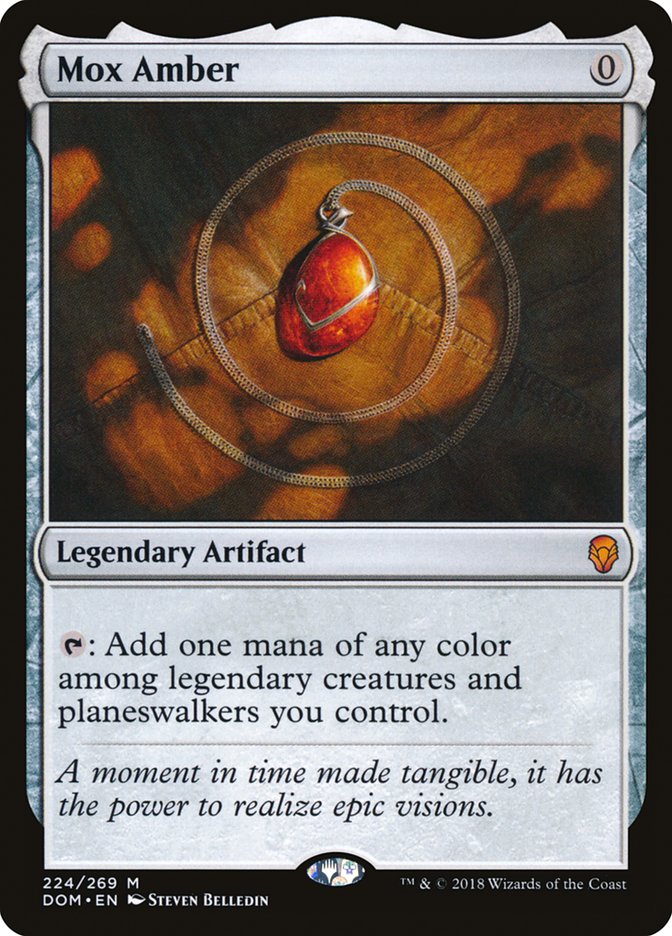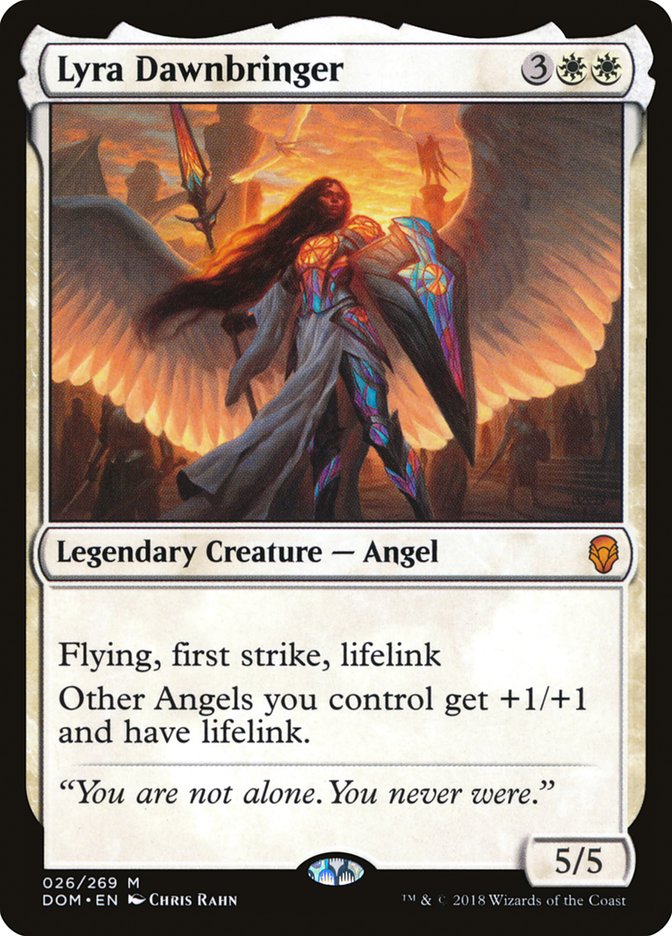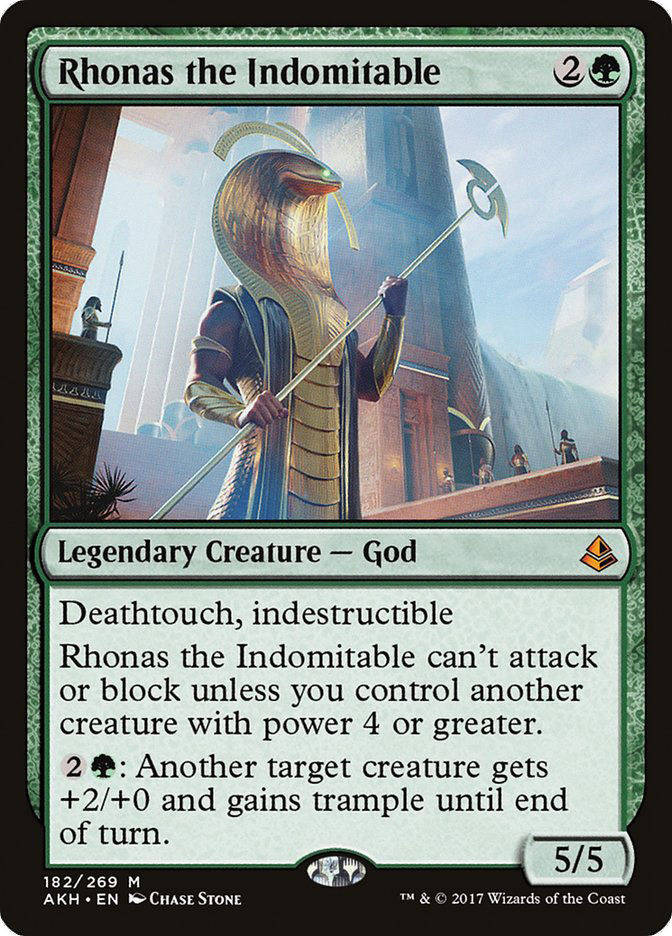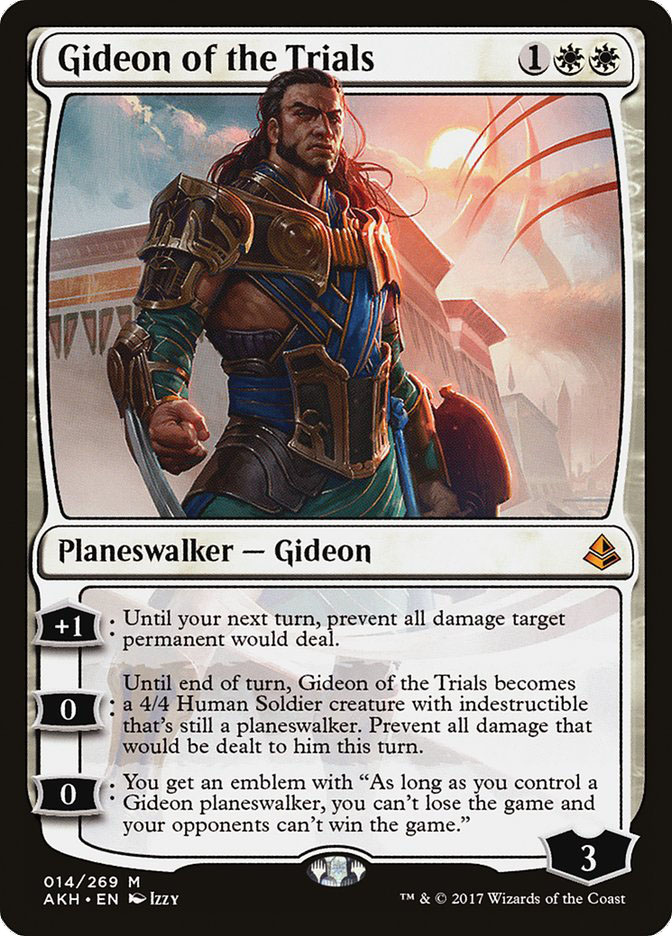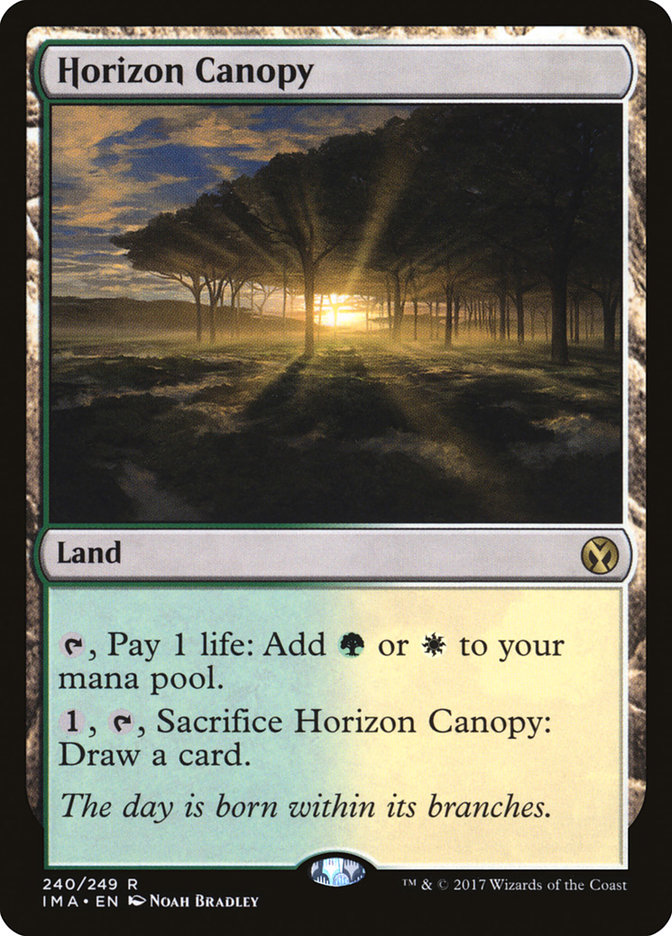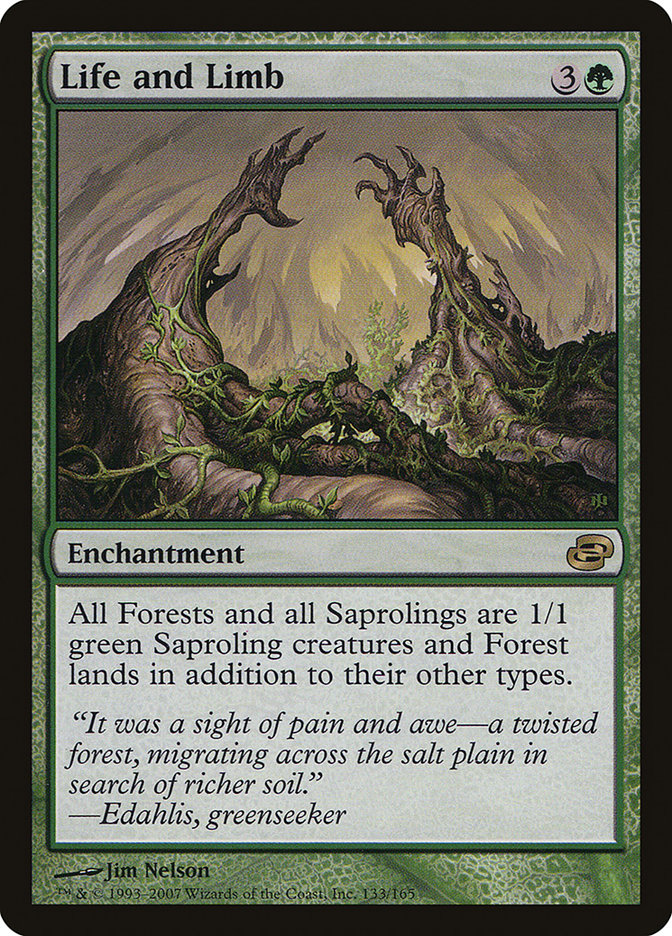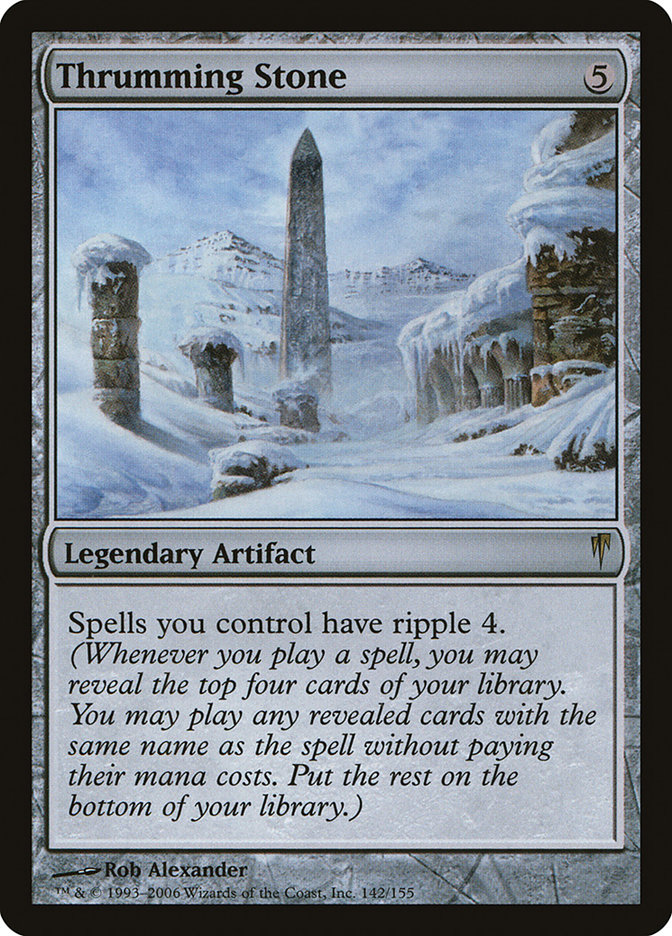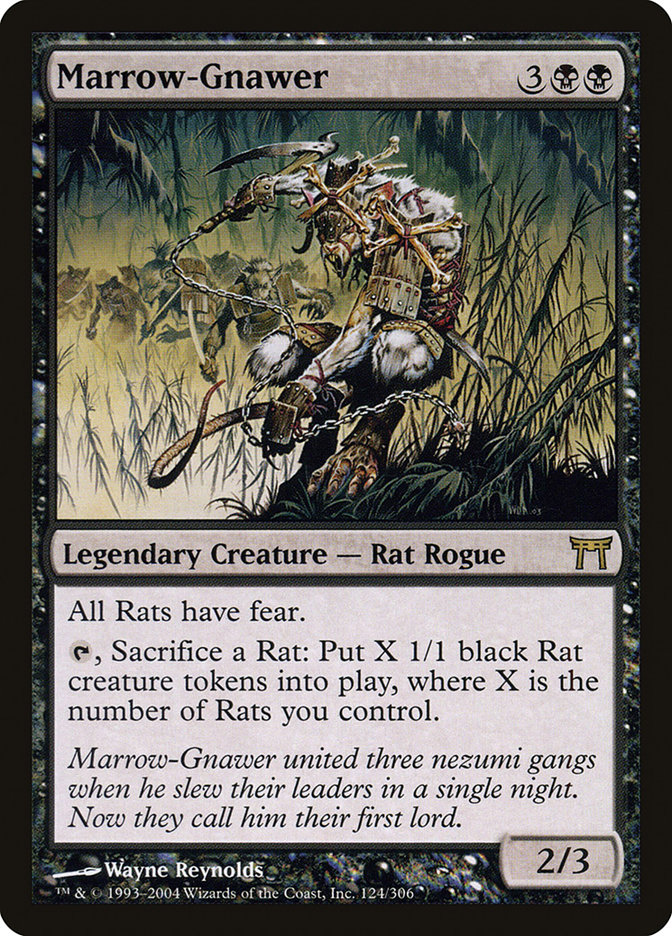Welcome back, Standard! It’s been a minute since we’ve had to think this
much about Magic’s fastest-changing format, but it’s back in the spotlight
in a pretty major way. With multiple Standard cards making big gains this
week, I wanted to take some time and talk about my overall approach to the
format.
It shouldn’t come as much of a surprise that Standard has taken a back seat
to Modern over the past couple of years. We’re coming off a series of
stagnant or unpopular metagames and lots of players simply stopped playing
as a result.
The Masterpiece series also made Standard speculation a lot less
interesting. As long as a full third of each set’s value was tied up in
lottery tickets, it was difficult for any card that didn’t see a ton of
play to spike hard enough for the buy-in to be worthwhile. For every
Walking Ballista, there were a dozen cards like Glint-Sleeve Siphoner that
failed to break the $4 mark, even when they started seeing a decent amount
of competitive play.
Dominaria
is different. Not only are there no Masterpieces, the metagame seems fairly
balanced at the moment. According to MTG Goldfish, Mono-Red Aggro and U/W
Control are the two most popular decks, but neither one has even a 6% share
of the total metagame. Beyond that, we’ve got R/B Aggro, W/B Aggro, U/W
Historic, G/B Constrictor, Bant Midrange, Sultai Energy, Goblin Gift, and
Mono-Green Aggro as viable alternatives. The Scarab God has been
effectively neutered, all five colors are playable, and you can sleeve up
aggro, control, or even (sort of) combo. Plus, anecdotal reports on my
Twitter and Facebook feed seem to indicate a surge of Standard attendance
at FNMs and other local events. Loads of people want to play Standard right
now and that hasn’t been true for a while.
This could all be somewhat temporary, of course. Kaladesh‘s
vehicles are still warping the format to some degree, and I’m still not
convinced that Karn, Scion of Urza won’t ultimately prove to be a horrible
design mistake. Goodness knows we’ve had promising Standard formats turn
bad in a hurry before. I’m optimistic, though, and I think most other
people are, too. Even though the reserved list spikes are continuing to
chug along, 80% of the Magic finance questions I’ve been asked this week
have been related to Standard.
It seems correct, then, to spend a week covering my rules for Standard
finance. Curious how to react to the latest market movement? Not sure when
to buy and when to sell? I’ve got you covered.
Rule #1: Sometimes it Pays to Pre-Order
Seriously! While I usually caution against pre-ordering an overabundance of
the hot tech, look at all the cards in Dominaria that have gone up
significantly since being previewed: Karn, Scion of Urza, Teferi, Hero of
Dominaria, Lyra Dawnbringer, History of Benalia, and Goblin Chainwhirler.
That’s right: if you pre-ordered four of the set’s five chase mythics,
(sorry, Mox Amber fans) you’re probably feeling pretty good right about
now.
This is an extreme case of pre-orders working out, but it’s not
unprecedented. I can point to similar situations in sets as diverse asKhans of Tarkir, Dragons of Tarkir, Avacyn Restored, and Magic Origins. Heck, even though we
all knew how good Chandra, Torch of Defiance was when Kaladesh was
previewed, you’d probably have been pretty happy purchasing those for
whatever they started out at, right?
This feels like a trend to me. If a set is good, its best cards will
continue to gain value over the first couple weeks of Standard legality. It
doesn’t only make sense to take a swing at Walking Ballista or Smuggler’s
Copter style $1-$3 rares that might end up at $10, it means that cards like
Karn and Teferi are worth considering as well. You still have to guess
correctly, (see: Amber, Mox), but there’s room to make money here if you do
your research and bail fast enough on your busted specs.
When I pre-order Standard cards, I like to focus on mythics as well as
rares that are both below $3 and below five CMC. Rares above $3 have too
high a risk of busting completely and hard-to-cast rares rarely see enough
play to remain above $5 for long.
Rule #2: Things Get Nutty During The First Five Weeks
At the start of a Standard season, all the big stores (and some of the
small ones) crack dozens of booster boxes. Their goal is to fill all their
pre-orders while hopefully ensuring that they also have enough stock to
fill a large part of the immediate demand.
When a card turns out to be very good very quickly, their available supply
shrivels up fast because there simply aren’t enough cards available yet.
And since most of the people who bought the early stock of, Lyra
Dawnbringer, say, need them for their own decks, it’s up to a very small
number of players and stores to dictate their price for the remaining
available copies. They can pretty much charge what they want, which is why
you’ll occasionally see multiple $40-$60 cards in the same set during their
first few weeks of legality.
The same fear of missing out that drives the reserved list prices comes
into play here, as nobody wants to miss “the next X.” (X is always the last
card to tear up Standard: Jace, The Scarab God, etc.) It’s like when a
rookie gets drafted to your favorite sports team and does really well right
out of the gate: all you see is upside.
At any rate, a lot of players mistake this for the new “market price,” only
to be shocked a couple of weeks later when their shiny new staples have
dropped in price by 30-40%.
Don’t forget that players are continuing to draft and crack packs of the
latest set, increasing the available supply of cards like Lyra and Karn. At
the same time, other players simply buy up the 3-4 copies of a card that
they need before dropping out of the market, reducing overall demand. Thus,
even if the best cards in Dominaria continue to prove themselves
in combat, their price tags will almost certainly start to drop at some
point. If you can hold off for a while, you’ll be able to get yourself a
much better deal.
Rule #3: Standard Prices Are a Bit More Resilient Than They Used To Be
Back in the Theros/Return to Ravnica/ Khans of Tarkir era, it wasn’t all that unusual for a Standard
rare to hit $10 in a few weeks before bottoming out at $1-$2 a month later
despite still seeing a reasonable amount of play. Back then, my advice was
simple: sell fast. I pre-ordered a bunch of Mantis Riders for $1,
rode them up to $8, missed the boat, and ended up dumping them for like
$2.50. The same thing happened to me with World Breaker back in Oath of the Gatewatch.
Much like with my outdated “don’t pre-order cards” heuristic, however, we
live in a different world now. For example, Jadelight Ranger saw a ton of
play back when Rivals of Ixalan was released, causing the card to
spike from $5 to $15. Then it started seeing less and less play, causing
the price to tumble all the way down to…$12. Metallic Mimic spiked to $10
when everybody thought that tribal decks were going to be huge, and it only
bottomed out around $7-$8 once they ended up mostly flopping. Seriously-I
tried to find a list of cards that were actually good in Standard before
losing, like, 80% of their value and it was very hard.
Don’t get me wrong: Standard finance still moves a bit faster than Modern
finance, and you’re generally taking on more risk as well. At the end of
the day, though, you probably have more time to flip your purchases than
you think.
Rule #4: Abandon Sinking Ships; Or, More Accurately, Abandon Ships That Never
Even Set Sail
Kumena, Tyrant of Orazca. Blood Sun. Growing Rites of Itlimoc. Nicol Bolas, God-Pharaoh. Mox Amber. What do all these cards have in common? They were
all major chase cards that never saw much competitive play. Their price
charts look like slow and endless downward slopes, and you’re pretty much
always wishing that you had sold your copies yesterday.
These cards are far different than ones we just talked about in rule #3. If
a card has proven itself in battle to some degree, it’ll usually maintain
at least a baseline level of demand. If not…well, Blood Sun started at $16,
and you can now find them for just $2. If you paid that much up front,
you’re probably kicking yourself for not selling at $14, and again at $8,
and again at $5…
Could Mox Amber show up in a deck this weekend that causes its price to
surge past the $60 mark? Sure. I’ll believe it when I see it, though, and
in the meantime, you’re better off selling while it’s still near $20. I’ll
be endlessly patient with cards that have shown me something in high-level
competition, but I’m merciless with cards that have never come to play at
all. Worst case, just buy in later.
Rule #5: Watch Magic Online Results and SCG Tour Twitch Streams
Standard cards spike in a matter of hours, not days. Even if I’m writing
this column on Sunday night, Monday morning can be too late for you to able
to buy in before the surge.
The best place to stay ahead of the curve? SCG Tour Twitch coverage. This
is especially important early on in a format, when the metagame is still
relatively uncharted. I try to watch at least a couple of hours on each of
the first few weekends. If you had done this on Dominaria week
one, for example, you’d have had a jump on everybody else who quickly
learned about how good Teferi and Lyra were.
Magic Online results are another great resource. Since MTGO prices move far
faster than paper prices, you can get a sense of where things are heading
in paper by seeing what happens online. For example, Karn began to surge on
May 6th on MTGO. In paper, it was May 9th. On MTGO, Settle the Wreckage
spiked on April 24th. In paper, it was April 30th. These things don’t
always line up
(Heart of Kiran is worth 23 tickets on MTGO right now, since
the Challenger Decks weren’t printed online), but it’s a reasonable rule of
thumb. FYI, Vraska, Relic Seeker is up a bit this week on MTGO since it’s
started to see some play in G/B Constrictor and Mono-Green Aggro…
Rule #6: Seasonal and Rotational Trends Still Rule All
The Magic community is like a herd of cattle: memorize their migratory
patterns and you can always predict where their attention will be.
Modern prices shot up in the spring because…well, we had a couple of
Masters sets, a massive unbanning, several major Modern events, and only a
single secondary Standard release. Standard prices are shooting up now
because Dominaria just came out and it’s awesome. They’ll likely
begin to fall off again soon before a slight uptick when the Core Set comes
out, followed by a massive dip as rotation approaches, followed by their
highest point all year in late September and early October once the fall
set drops. This always happens and it’s super easy to take advantage.
First, don’t forget that Kaladesh and Amonkhet are going
to rotate in four months. You’ve still got a little while to play with
those cards, but they’re going to tank and tank hard starting at some point in June
or July. If you’ve got a few extra copies of something like Rhonas the
Indomitable, which is spiking right now, you shouldn’t forget that you
probably won’t have any future chances to sell these for anywhere near what
they’re worth at the moment. On the other hand, Search for Azcanta is going
to be around for another year and a half.
Speaking of Search for Azcanta, it’s pretty obvious that the card is going
to be good in Standard for the duration of its legality. Ditto for a card
like Karn, Scion of Urza. When you’ve identified a card that’s going to see
play no matter what the metagame looks like, it’s worth specifically
targeting them during those seasonal lulls in interest. If Search for
Azcanta drops off enough in August, for example, I’ll be buying a stack of
them.
These are also the sorts of cards that you may want to consider just buying
and forgetting about. If you’ve already got 80% of a Standard deck put
together and you just need Karns, who cares if they might drop off a bit
between now and the next time they hit $60? The opportunity cost by being
frugal in terms of maximizing your time and the rest of your collection
should always be considered when making these decisions.
This Week’s Trends
Move over, Thanos: Karn, Scion of Urza is the new villain in town,
and you’ll be hard-pressed to find any copies under the $60 mark
right now. Karn is the fourth most-played card in Standard at the
moment (according to MTG Goldfish), which means that this isn’t
just hype: Karn is likely to remain Dominaria‘s chase card
for the foreseeable future. I hope you pre-ordered them when I told
you to!
If you still don’t have your Karns, it might be worth seeing if you
can hold off for a couple of weeks. Standard is getting close to
the apex of its hype cycle and Karn will drop off a bit once the
summer starts to get a little bit hotter. This doesn’t mean that
all you Karn owners should sell, as the card will likely remain both
very good and very expensive for months and months to come, but
there should be a reasonable buy-low window starting in late June
or early July.
Three other Standard players made a leap this week as well: Gideon
of the Trials, Rhonas the Indomitable, and Walking Ballista.
Walking Ballista makes a ton of sense: Not only is it the
most-played card in Standard right now, it’s a Modern staple. Just
don’t forget that it’s going to rotate in the fall, and even though
it sees play in the Eternal formats it’ll probably fall back off
toward $10 by September.
Rhonas and Gideon will likely drop off a bit sooner: again, we’re in a
mini-Standard boom thanks to Dominaria’s popularity, and there are
a ton of players re-engaging with Standard who didn’t draft a ton of Amonkhet. These cards are good, but they’re going to peak fast and
then slowly start to decline. Neither sees enough play to justify a $20-$30
price tag for long, though Gideon has a shot if the metagame continues to
trend in that direction. I’m selling both into the current hype.
What cards might be next to spike? Check out Goblin Chainwhirler,
which is surging up the charts right now and will probably end up
in the $10-$12 range at some point soon. Aethersphere Harvester
sees a bunch of play right now, and it spiked on MTGO last week;
it’s still just a $2 card in paper. Fumigate should probably be
higher than $2 as well. Lastly, Lyra Dawnbringer might be
undervalued relative to the rest of Dominaria. The Angel
only sees slightly less play than Karn, but it’s only the third
most expensive card in the set. It should be ahead of Teferi, Hero
of Dominaria at least.
Over in Modern, Horizon Canopy continues to slowly climb out of the
reprint hole that Iconic Masters left it in. I’ve been
telling you to buy this one for months now, and it’s finally
approaching $90 again. Hey, maybe Iconic Masters wasn’t
quite as bad as we all thought at the time?
Other than that, though, Modern prices have flattened out a bit over the
past couple of weeks. Heavy hitters like Mox Opal and Liliana of the Veil
are each down a couple of bucks. This doesn’t have to do with any changes
in the metagame, it’s just that people are focused on Standard right now.
While there aren’t any super bargains in the Modern index, it’s a decent
window for folks to buy in before the next round of hype.
There were several Commander spikes worth talking about this week:
Life and Limb (Saprolings), Thrumming Stone and Marrow-Gnawer (Rat
Colony), and Goblin Bombardment (not sure…perhaps just because
it’s a tokens staple in various decks?) There isn’t a ton of action
to take on these moves, but I figured they were worth mentioning. I
guess maybe take a look at some other good Rats? EDHREC tells me
that Locus Miser might be a good target. It’s run in about a third
of all Rat Colony decks, and goodness knows that cards from Saviors of Kamigawa have a pretty low supply. You can
still find these pretty easily in the $1 range.
Also on the Commander front, Commander Anthology 2 is
coming later this year, and the box set includes the Atraxa,
Mimeoplasm, Kalemne, and Daretti decks. This means that the
following financially relevant cards will be getting a reprint:
- Atraxa, Praetors’ Voice – $35
- Fiery Confluence – $33
- Wurmcoil Engine – $30
- Urza’s Incubator – $20
- Grave Pact – $17
- Blade of Selves – $14
- Ruby Medallion – $10
- Caged Sun -$10
- Eternal Witness – $9
- Skullbriar, the Walking Grave – $8
- The Mimeoplasm – $8
- Thought Vessel – $8
- Reliquary Tower – $7
- Solemn Simulacrum – $6
- Gisela, Blade of Goldnight – $6
- Crystalline Crawler – $5.50
- Living Death – $5
This adds up to a retail price of $232.50 without even getting to a bunch
of really solid sub-$5 inclusions. Several of the legends will be released
in foil for the first time as well, so you can believe that the Commander
Anthology version of, say, Atraxa will be even more expensive than the
original.
Right now, you can pre-order Commander Anthology 2 for $200 on
StarCityGames. That’s a solid price if you want the cards for yourself, and
you’ll likely be able to play with the decks for a couple of years and then
re-sell them (if you want) at a future date for at least a decent chunk of
what you paid, if not the entire amount. While I do expect some of these
cards to drop in price temporarily, they don’t usually make a lot of these
Commander Anthologies so they’ll probably rebound again at some point.
While the margins aren’t good enough for me to recommend the ol’
crack-and-flip, I can at least say that this is a solid buy if you love
Commander.
Oh, and expect a few people to respond to this news by attempting to spike
the price of a few other Commander cards that weren’t reprinted in Commander Anthology 2. Feel free to sell into the hype, especially
with a new multiplayer product coming out in a couple of weeks that’s sure
to contain a decent number of casual reprints.
Lastly, we’ve just had yet another week of wild reserved list and
Old School buyouts. The Abyss, Jihad, Hazezon Tamar, All Hallow’s
Eve, Mirror Universe, Divine Intervention. Guardian Beast,
Telekinesis, Ali from Cairo, Land Equilibrium, and Quarum Trench
Gnomes headlined the pre-Revised buyouts, with several of
these cards doubling or tripling in value.
Dual lands are on the move as well, just like I predicted they would be
last week. Bayou, Savannah, Scrubland, Tundra, and Plateau were all up big,
and you can expect the more expensive blue duals to rise in tandem at some
point soon. I’ve also started to see some pretty major gains from the Power
9, which are likely to continue as well.
Some “newer” reserved list cards are spiking as well. Mind Over Matter,
Meditate, Venifact Bottle, and Illusions of Grandeur were the biggest
movers, and I’m a lot more skeptical about these. Mind Over Matter is at
least good, but Venifact Bottle is utterly worthless and there was some
talk that the Meditate buyout was linked to
a fraudulent Legacy result out of Thailand
. Make sure you double-check these things before you buy! Of course, it was
a reserved list spike, so it’s probably not going to drop off all that much
regardless.
Lastly, some Unlimited, Revised and The Dark cards are spiking not because they’re on the
reserved list, but simply because they’re old, rare, and I guess
good in Old School? Savannah Lions, Ball Lightning, Earthquake,
Gloom, and Stasis were the biggest winners on this front, and it’ll
be interesting to see if this keeps up. If so, it means that
literally all cards from this era are undervalued right now.
Seriously, if you’ve ever wanted to own a bunch of Revised
-era nonsense, this might be your last chance for a while.


